Text

Peek a boo
Dichelotarsus cavicollis, a type of soldier beetle
Northern California
#Dichelotarsus cavicollis#soldier beetle#coleoptera#peek a boo#hidey hole#nature#bugs#nature photography#biodiversity#animals#inaturalist#arthropods#bugblr#entomology#insect appreciation#macro photography#macro#bedstraw#bay area wildlife#invertebrates
14 notes
·
View notes
Text

Soldier beetle in genus Podabrus
Northern California
#soldier beetle#coleoptera#beetle#Podabrus#cute bugs#bugblr#bugs#nature#nature photography#biodiversity#animals#inaturalist#arthropods#entomology#insect appreciation#macro photography#macro#bay area wildlife#cute animals#invertebrates
11 notes
·
View notes
Text
Female crane fly (family Tipulidae) laying eggs. I knew some species lay eggs in soil, but wasn’t expecting it to look this silly 😆
While most crane fly adults don’t feed (they’re not giant mosquitoes!), most larvae eat dead plant matter. Larvae are an important part of the soil ecosystem because they convert organic matter into nutrients that plants and other life forms can use. Crane flys are also an important food source at all stages of their life for everything from spiders to song birds.
#crane fly#tipulidae#diptera#mosquito hawk#gollywhopper#beneficial insects#soil#soil science#ecology#nature#bugs#biodiversity#animals#inaturalist#arthropods#bugblr#entomology#insect appreciation#funny bugs#funny video#needs squeaking bed noises#or dorky music#leather jacket#flies are cool#flies#not all flies are bad#don’t squish bugs#biology nerd#invertebrates
75 notes
·
View notes
Text
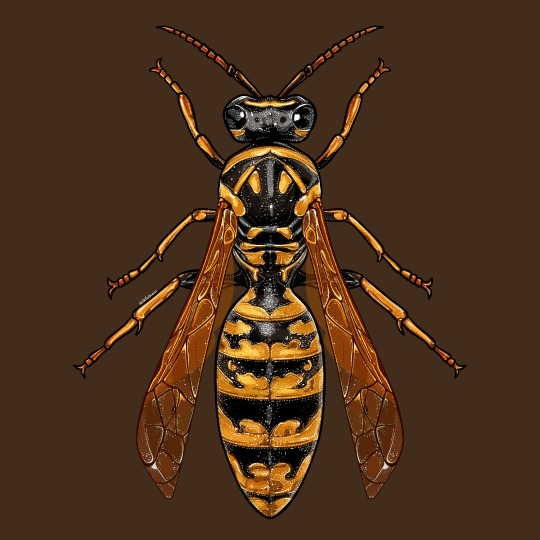
Aaaaaaaaaaaaaa a wasp
#ooo very nice#wasp#hymeoptera#art#bug art#artists on tumblr#insects#invertebrates#entomology#nature appreciation#reblog
617 notes
·
View notes
Text
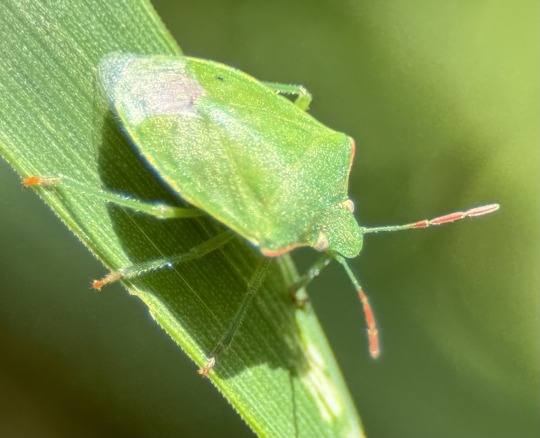

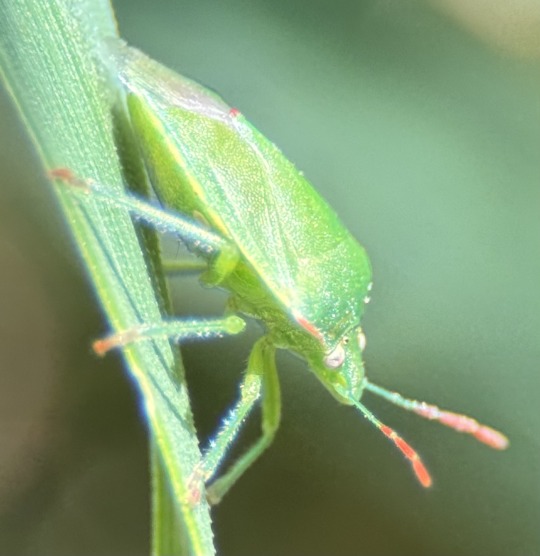

Why hello there :3
(Thyanta species, Northern California)
#Thyanta#hemiptera#true bugs#bug#stink bug#nature#nature photography#biodiversity#animals#inaturalist#arthropods#bugblr#entomology#insect appreciation#invertebrates#bugs#creature#insect#cute#green#northern california#bay area wildlife#macro photography#macro
23 notes
·
View notes
Text
Psst...
Preorders for my cicada book soft-launched today. I'm going to wait to make formal advertisements and announcements until I finalize the book cover (likely early next month), but if you want to stake your claim on a copy early, now's your chance!
29 notes
·
View notes
Text


Skippers are so freakin cute 🥰
Burnsius communis (common checkered skipper), Northern California
Blehhh 😛
#I kinda gave up on glaze etc for now#it distorts photos too much#and uses a lot of computing power#which my computer can handle but then I can’t do other things while it’s processing images#but still fuck this ai shit#nature#nature photography#bugs#biodiversity#animals#inaturalist#arthropods#bugblr#entomology#insect appreciation#skipper#cute butterfly#butterfly#lepidoptera#Burnsius communis#hesperiidae#fuzzy buddy#cute#critters#invertebrates#pollinators#springtime#macro photography#macro#flower
127 notes
·
View notes
Text
It would be nice if humanity could reach a point where landscaping like this is not okay. I walk past this area frequently, and they regularly nuke everything with roundup and remove all the detritus. Think of all the arthropods and other wildlife this wasted space could support. I understand having fire buffers around buildings, but this attitude isn’t exclusive to plots close to buildings…

I also understand many native plants can be more difficult to grow, but California poppies (in the Bay Area) are not one of them. I’m sure other regions have similarly easy to grow species. Even a few plants can make a huge difference.
We as a culture need to stop it with the blasé attitude about the destruction of nature, particularly bugs (ie invertebrates). “Kill it with fire” is a shitty and ignorant way to react to a tiny animal that is merely trying to exist. The vast majority of bugs are not out to get you and are, in fact, terrified of you (rightfully so in many cases).
Would you squish a baby bird? Didn’t think so.
#rant#that article yesterday set me off lol#it’s been bothering me for a long time though#ecology#ecological destruction#bugs#don’t squish bugs#sustainable landscaping#plant native#native species#nature#biodiversity#conservation#roundup#stop it
56 notes
·
View notes
Text
#psa#invertebrates need help#don’t excessively use pesticides#plant native flowers and other plants#support native pollinators#not just honeybees#don’t mow and weed whack everything#like can we just stop killing everything#nature#gardening#bugs#:-(#bugblr
364 notes
·
View notes
Text
Hey everyone, I plan on resuming regular posts once I figure out Glaze and Nightshade to avoid AI theft. I’ve been seeing a concerning amount of fake wildlife images, and I don’t want to contribute in any way to this since it fuels the spread of misinformation and pseudoscience. Tumblr has made it very clear that they have no problem selling data to train AI models.
I’ll be creating a website for this and my other artwork at some point, but that’s still a long way off. I also like the community here.
(iNaturalist is an exception when it comes to AI because this is actually helping science and there are tools to improve data quality. The creators care about scientific integrity and it is funded by reputable organizations like the California Academy of Sciences. Another example of “good” use of AI is Merlin.)
#fuck ai art#sorry for the colorful language but this is deeply concerning#it erodes public trust in science#it makes things difficult for ppl who want to learn#basically ruins the internet as an information source#also it’s theft#I don’t care if it’s in your terms and conditions#no one thought this would happen so fast#misinformation#pseudoscience#as a scientist I can’t in good conscience contribute to this#wildlife photography#nature photography#bugblr#no one asked for this#except greedy corporations#capitalism#enshittification#glaze#nightshade
6 notes
·
View notes
Text
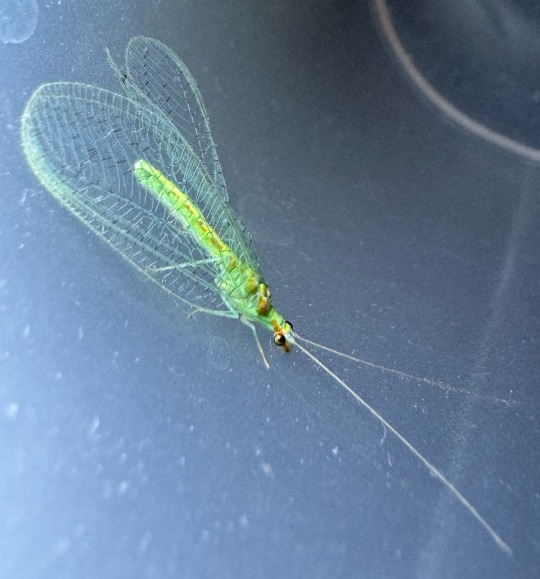

Gorgeous lacewing I had to escort outside. Reminds me of a dragon.
Genus Chrysopa, Northern California
#repost because I’m traveling#this guy needs more attention#bugblr#chrysopa#invertebrates#cute#biology#macro photography#macro#neuroptera#lacewing#green#nature appreciation#nature blog#insect#bug#nature photography#bay area wildlife
7 notes
·
View notes
Text

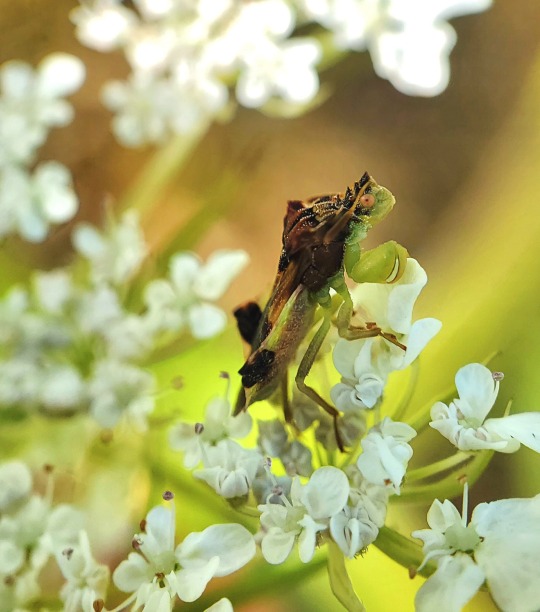
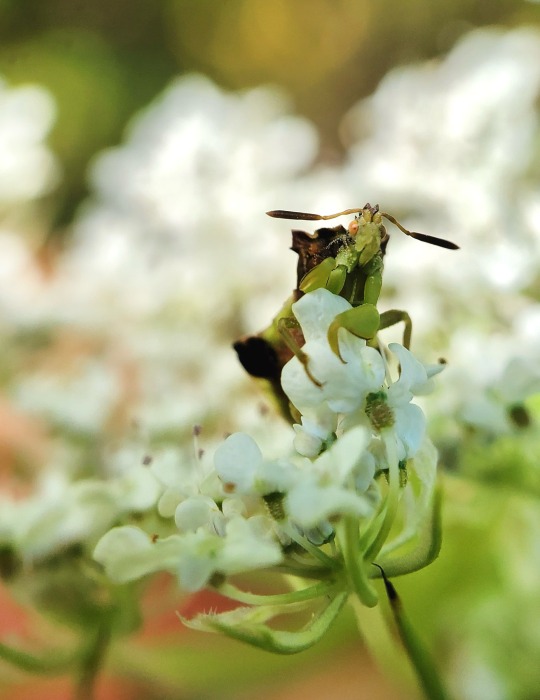
Ambush bug (a type of assassin bug) in the genus Phymata. These predatory insects hide on or under flowers, waiting to attack unsuspecting pollinators.
#ambush bug#assassin bug#bug#hemiptera#raptorial forelegs#predator#ambush#assassin#nature#bugs#nature photography#biodiversity#animals#arthropods#inaturalist#bugblr#insect appreciation#entomology#macro photography#flower#garden#cute bugs
75 notes
·
View notes
Text

Blurry but super cute <3
Jumping spider in genus Habronattus
Northern California
#paradise jumping spider#jumping spider#salticidae#Habronattus#cute spider#bugs#nature#biodiversity#animals#inaturalist#arthropods#bugblr#spider appreciation#arachnid#cute#kawaii#invertebrates
46 notes
·
View notes
Text

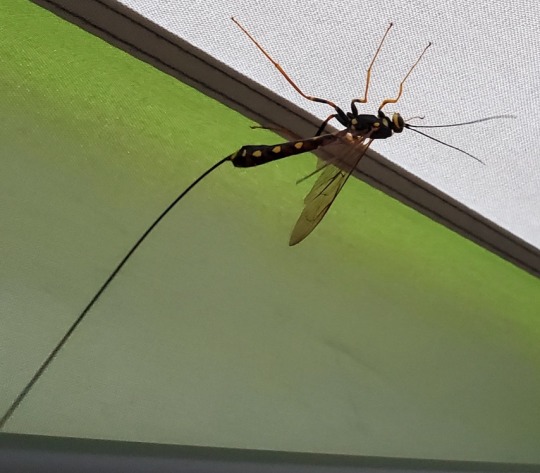
Look at the crazy ovipositor on this Western giant ichneumon wasp (Megarhyssa nortoni nortoni). Females of this species have ovipositors 2-3 inches (51-76 mm) long! Even though it looks intimidating, they can't sting. The long ovipositor is used to pierce tree bark and lay eggs on horntail (wood wasp) larvae. When the egg hatches, the ichneumon wasp larva eats the wood wasp larva from the inside (ie it's a parasitoid).
Sierra Mountains, California, US
#giant ichneumon wasp#megarhyssa nortoni#that ovipositor#wasp#cool animals#creature#ovipositor#bugs#nature#nature photography#biodiversity#animals#arthropods#inaturalist#bugblr#entomology#insect appreciation#invertebrates#inverts#hymenoptera#wasps are cool#biology
67 notes
·
View notes
Text
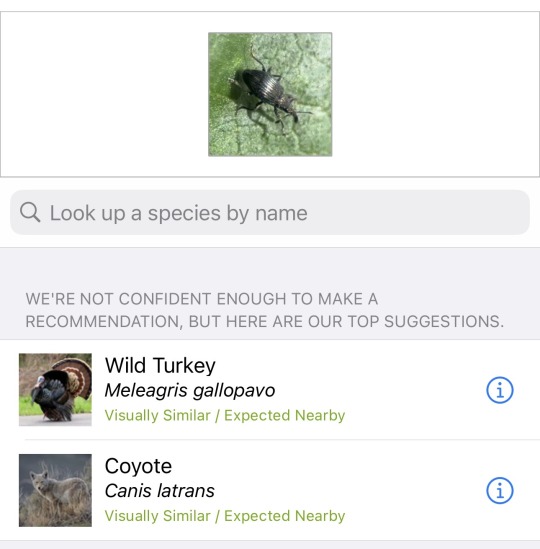
….. huh?
#is a weevil#I know iNat isn’t perfect#but I thought this was pretty funny#weevil = turkey#gobble gobble#random nonsense#weevil#snoot#bugs#inaturalist#funny#humor#bugblr#this guy was SUPER tiny#hence the crappy picture#beetles#coleoptera
20 notes
·
View notes
Text

LONG
(Banana slug in Northern California)
Seriously just look at how large this creature is. And that face.
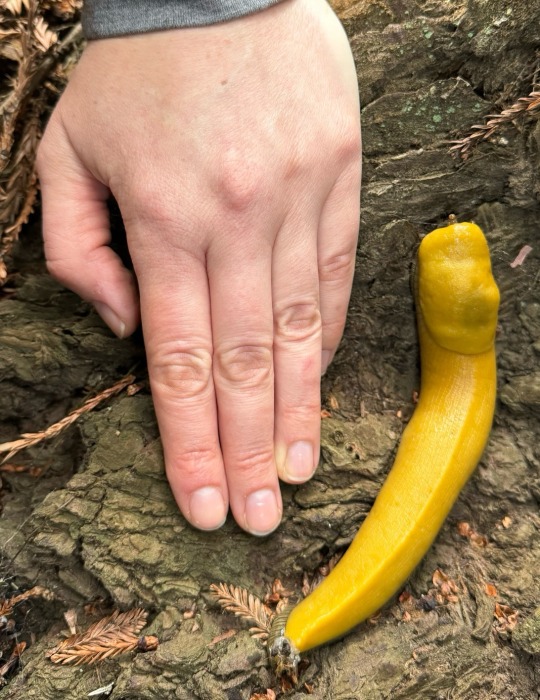

#so long#long and wiggly#nanner#banana slug#hand for scale not banana#I wish I had a banana that day lol#next time#nature#bugs#nature photography#biodiversity#animals#inaturalist#mollusk#invertebrates#slug#slug appreciation#creature#yellow#banana#redwood forest#california wildlife#that’s the face of a champion#a champion at consuming detritus#northern california#bay area wildlife#natures trash disposal service#nature appreciation#nature nerd#gastropods
91 notes
·
View notes
Text

Eastern carpenter bee (Xylocopa virginica) in central Pennsylvania
#xylocopa virginica#repost#bee#carpenter bee#large buzz#buzz buzz#hymenoptera#pollinators#flower#purple#nature appreciation#nature blog#bugblr#insect#entomology#nature photography#garden friends#invertebrates#cute bee#little friends#creature#animals
10 notes
·
View notes